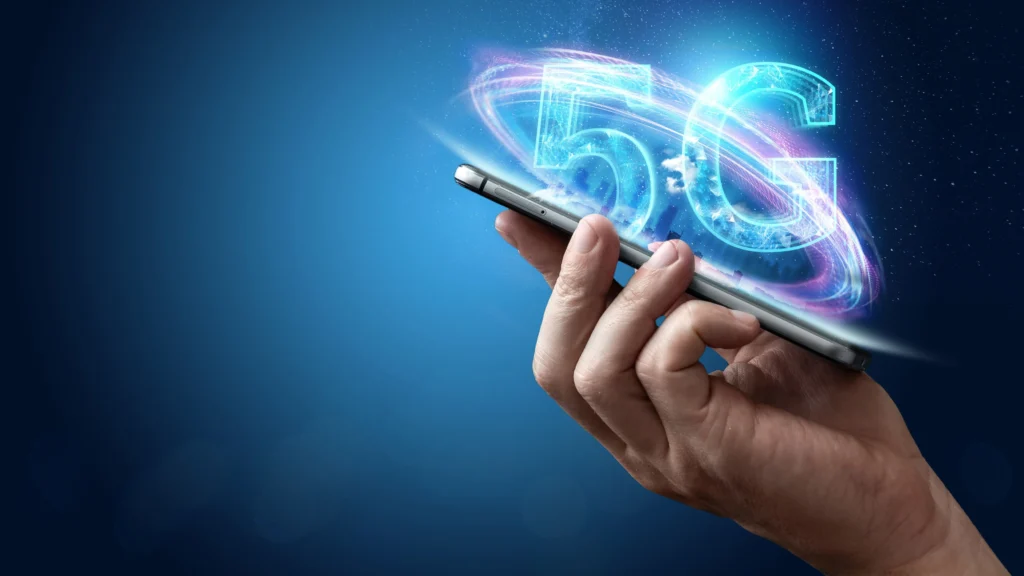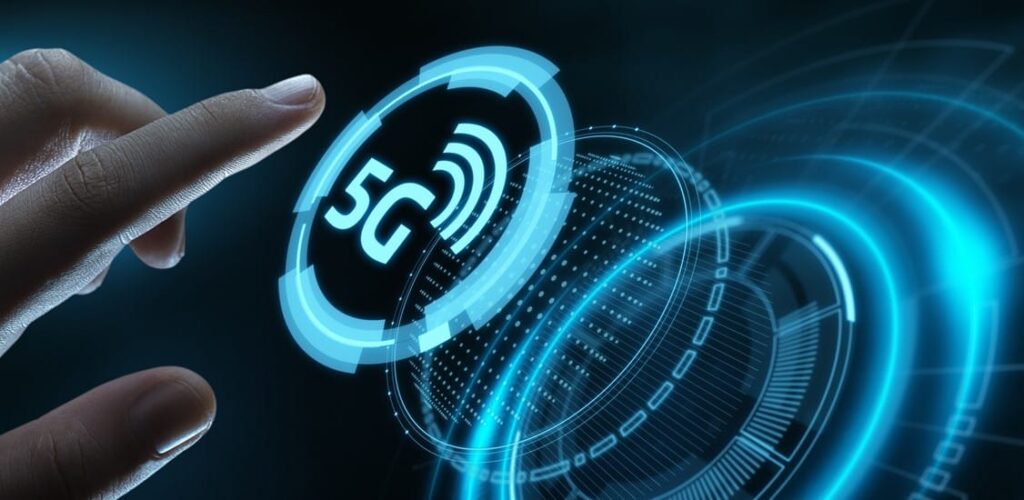
5G technology is the fifth generation of cellular network technology that promises to bring about a major transformation in the way we use the internet. It offers a significant improvement over previous generations of cellular technology and is designed to meet the growing demand for high-speed, low-latency, and highly responsive wireless connections.
5G technology operates in a higher frequency band compared to its predecessors, which allows for faster data transmission and lower latency. With 5G, users can expect download and upload speeds that are several times faster than those offered by 4G networks, resulting in an improved user experience for activities such as online gaming, video streaming, and other data-intensive tasks.
In addition to faster speeds, 5G technology also enables new use cases such as autonomous vehicles, smart cities, and the Internet of Things (IoT). The increased network capacity and low latency offered by 5G technology make it possible for billions of devices to be connected to the internet simultaneously, creating a vast network of connected devices and systems. This will provide new opportunities for innovation and creativity across a range of industries.
The deployment of 5G technology requires new infrastructure, including the construction of more cell towers and the allocation of more spectrum to meet the increased demand for data. Many countries and telecommunications companies are in the process of launching 5G networks, and the technology is expected to work seamlessly with previous generations of cellular technology, ensuring a smooth transition for users.
Overall, 5G technology has the potential to significantly impact the way we live, work, and communicate in the future. Its faster speeds and improved network capabilities will enable new and innovative uses, making it a key technology for shaping the future.
What are ‘G’s?
The “Gs” or generations of the internet refer to the different stages of development and evolution of cellular network technology. The major generations of cellular network technology include:
- 1G: The first generation of cellular network technology, 1G was introduced in the 1980s and was primarily focused on voice communication. 1G networks were analog and had limited capabilities.
- 2G: The second generation of cellular network technology, 2G was introduced in the 1990s and was primarily focused on digital voice communication. 2G networks also introduced text messaging and limited internet connectivity.
- 3G: The third generation of cellular network technology, 3G was introduced in the early 2000s and brought about significant improvements in internet connectivity and data transfer speeds. 3G networks enabled users to access the internet from their mobile devices and made it possible for them to use data-intensive applications such as streaming video.
- 4G: The fourth generation of cellular network technology, 4G was introduced in the late 2000s and brought about major improvements in internet speed and connectivity. 4G networks enabled users to enjoy high-speed internet access and use data-intensive applications with ease.
- 5G: The fifth generation of cellular network technology, 5G was introduced in the early 2010s and is designed to meet the growing demand for high-speed, low-latency, and highly responsive wireless connections. 5G networks offer significant improvements over previous generations of cellular technology, including faster speeds, improved network capacity and reliability, and reduced latency.

Each generation of the internet has brought about significant improvements in the capabilities of cellular networks, enabling new and innovative uses for internet connectivity. The continued evolution of cellular network technology will play a critical role in shaping the future of the connected world.
What is 5G Technology?
5G is the fifth generation of cellular network technology that is set to bring about a major transformation in the way we use the internet. It is designed to meet the growing demand for high-speed, low-latency, and highly responsive wireless connections, and offers a significant improvement over previous generations of cellular technology.
5G technology operates in a higher frequency band compared to its predecessors, which allows for faster data transmission and lower latency. The higher frequency also provides more bandwidth, enabling more data to be transmitted at once. With 5G, users can expect download and upload speeds that are several times faster than those offered by 4G networks, resulting in an improved user experience for activities such as online gaming, video streaming, and other data-intensive tasks.
In addition to faster speeds, 5G technology also brings about improvements in network capacity and reliability. The increased network capacity makes it possible for billions of devices to be connected to the internet simultaneously, creating a vast network of connected devices and systems. This will provide new opportunities for innovation and creativity across a range of industries, from healthcare to entertainment.
One of the key features of 5G technology is its low latency, which refers to the time it takes for a data packet to travel from one device to another. With 5G, latency is reduced to a fraction of what it was with previous generations of cellular technology, making it possible for real-time communication and interaction with devices and systems. This is particularly important for applications such as autonomous vehicles, where low latency is critical for ensuring safety.
The deployment of 5G technology requires new infrastructure, including the construction of more cell towers and the allocation of more spectrum to meet the increased demand for data. In addition, 5G technology is designed to work seamlessly with previous generations of cellular technology, ensuring a smooth transition for users.
In conclusion, 5G technology is set to bring about major changes in the way we use the internet, offering faster speeds, improved network capacity and reliability, and reduced latency. It will provide new opportunities for innovation and creativity across a range of industries, and will play a critical role in shaping the future of the connected world.
Benefits

5G technology offers several benefits over previous generations of cellular networks. Some of the key benefits of 5G technology include:
- Faster Speeds: 5G technology offers much faster download and upload speeds compared to previous generations. 5G networks are capable of providing speeds of up to 20 Gbps, making it possible for users to download high-quality content, such as full-length movies, in seconds.
- Low Latency: 5G technology also offers lower latency, or the time it takes for a signal to travel from the source to the destination. With 5G, latency is reduced to just 1 millisecond, enabling real-time communication and interaction.
- Improved Network Capacity: 5G technology provides improved network capacity, allowing for more devices to be connected to the network at the same time. This will be particularly important for the growth of the Internet of Things (IoT), where billions of devices will need to be connected to the internet.
- Increased Reliability: 5G technology provides increased reliability, meaning that users are less likely to experience dropped connections or slowdowns, even in congested areas. This will be critical for mission-critical applications, such as autonomous vehicles and telemedicine, where reliability is of the utmost importance.
- Enhanced User Experience: 5G technology provides an enhanced user experience, enabling users to enjoy lightning-fast downloads and seamless streaming of high-quality content, even in congested areas.
- New Use Cases: 5G technology enables new use cases that were not possible with previous generations of cellular networks. For example, 5G networks will be critical for the growth of autonomous vehicles, smart cities, and the Internet of Things (IoT) among others.
- Improved Network Security: 5G technology also offers improved network security, protecting against potential cyber attacks and ensuring the privacy and security of user data.
- Cost-Effective: 5G technology provides cost-effective solutions for a wide range of industries, from healthcare to entertainment, enabling new levels of innovation and creativity.
In conclusion, 5G technology offers several key benefits over previous generations of cellular networks, providing faster speeds, lower latency, improved network capacity and reliability, enhanced user experience, and enabling new use cases. The full potential of 5G technology has yet to be realized, but it is clear that it will play a critical role in shaping the future of many industries in the years to come.
Drawbacks

While 5G technology offers several benefits, there are also some potential drawbacks to consider. Some of the key drawbacks of 5G technology include:
- Infrastructure Costs: Deploying 5G technology requires significant investment in new infrastructure, including the installation of new cell towers and the allocation of more spectrum. These costs are expected to be passed on to consumers in the form of higher prices for 5G services.
- Limited Coverage: Currently, 5G coverage is limited, with many rural and remote areas not yet having access to 5G networks. This means that many users may not be able to experience the full benefits of 5G technology, at least not in the near future.
- Interference with Other Technologies: 5G technology operates in higher frequency bands than previous generations of cellular networks. This means that 5G signals can be more easily disrupted by physical obstacles, such as buildings and trees.
- Potential Health Concerns: Some people have raised concerns about the potential health effects of 5G technology, including possible effects on the human body and the environment. However, the World Health Organization (WHO) has stated that there is no scientific evidence to support these claims.
- Cybersecurity Risks: As with any new technology, 5G networks face potential cybersecurity risks, including the threat of hacking, identity theft, and cyber attacks. This makes it important for users and companies to implement robust security measures to protect their data and devices.
- Interoperability Issues: As 5G technology is still in its early stages of deployment, there may be some interoperability issues with existing technologies and devices. This could lead to compatibility problems and difficulties in connecting devices to 5G networks.
In conclusion, while 5G technology offers several key benefits, there are also potential drawbacks to consider. These include infrastructure costs, limited coverage, interference with other technologies, potential health concerns, cybersecurity risks, and interoperability issues. It is important for users and companies to be aware of these potential drawbacks when deciding whether to adopt 5G technology.
Conclusion
In conclusion, 5G technology presents both opportunities and challenges. On the one hand, 5G technology offers a host of benefits, including faster download and upload speeds, lower latency, improved network capacity, and increased reliability. These features can greatly enhance the way we use the internet and enable new and innovative use cases.
However, it is also important to consider the potential drawbacks of 5G technology, including the high cost of infrastructure, limited coverage in some areas, interference with other technologies, potential health concerns, cybersecurity risks, and interoperability issues. It is therefore essential for users and companies to carefully weigh the benefits and drawbacks of 5G technology before deciding to adopt it. Despite these challenges, it is clear that 5G has the potential to be a game-changer for the internet and the way we live and work.
